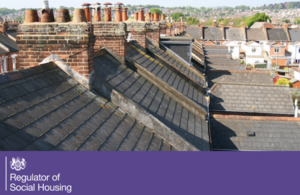Regulator publishes Statistical Data Return 2017 to 2018
Statistical Data Return 2017-2018 finds high volume of transfer activity

Private registered providers of social housing in England have increased the amount of social housing stock that they own, and undertaken a large volume of transfer activity during the year, according to the Statistical Data Return 2017-2018, published today (23 October 2018) by the Regulator of Social Housing.
These national statistics are collated from annual returns submitted by private registered providers of social housing in England.
The 258,370 units transferred into providers’ stock this year, the highest amount ever recorded in the SDR, have been driven by providers modifying their group structures through mergers or restructuring. With no Large Scale Voluntary Transfers of local authority stock having taken place this year, there were no major additions to stock from outside of the PRP sector.
Trends in this year’s SDR figures include:
-
PRPs reported an increase of 1.1% from 2017 in the amount of social housing stock that they own (2,812,320 units/bedspaces) compared with the 0.7% growth seen between 2016 and 2017
-
The average net rent (£96.33 per week) for general needs stock owned by large PRPs shows a -0.3% reduction on 2017. The lower reduction in rents reported in 2018 as compared to last year is likely to be as a result of changes to the way in which temporary social housing has been captured in the 2018 data. When the temporary social housing unit data is excluded from the analysis the data indicates a reduction in rents of -1.1% from the previous year.
-
The average net rent (£90.08 per week) for supported housing / housing for older people stock owned by large PRPs sees an increase of 2.0% on the previous year. A significant proportion of the increase is driven by a small number of PRPs operating a lease-based supported housing business model, many of which did not appear in the 2017 rent data due to owning fewer than 1,000 units. When these providers’ data are excluded from the analysis the increase in supported housing rents is 0.2% on last year.
Fiona MacGregor, Chief Executive of RSH said:
The Statistical Data Return provides a comprehensive picture of how the social housing sector is changing as it grows. We hope that the analysis that we provide supports stakeholders to gain an understanding of key trends in the sector. Publishing analysis of regulatory data is fundamental to our commitment to transparency and delivering our objective to maintain confidence in the regulation of providers of social housing.
The regulator collects data on stock type, size, rent and location of social housing stock at 31 March each year, and data on sales and acquisitions made between 1 April and 31 March. The information is used to inform its risk-based and proportionate approach to regulation and to help a range of stakeholders better understand the housing association market.
The regulator’s Statistical Data Return 2017 to 2018 is available on the RSH website along with the SDR data set. RSH has also introduced provider level and geographic (local authority) level look-up tools for user-friendly access to the underlying data.
Further information
-
The annual releases are available on the Statistical Data Return statistical releases collections page.
-
These national statistics are collated from an annual survey of private registered providers of social housing in England – the Statistical Data Return. In 2017-18 the overall response rate was 95%, with 100% of registered providers who own 1,000 or more units/bedspaces (including Affordable Rent units) completing the return.
-
A total of 1,432 providers completed this year’s Return – although this was the same number as 2017 it comprises changes in the structure of the sector, such as mergers, new registrations and some PRPs now becoming larger providers.
-
The SDR publication consists of a statistical release document, additional tables, a full data spreadsheet, full data set zip file, data quality report, and a pre-release access list. It also includes newly introduced provider level and geographic (Local Authority) level look-up tools and a list of registered providers who did not submit a return in 2018 within the timeframes required.
-
Figures do not include non-social housing units built by unregistered entities within PRP groups, which are outside the scope of the SDR.
-
The Regulator of Social Housing promotes a viable, efficient and well-governed social housing sector able to deliver homes that meet a range of needs. It does this by undertaking robust economic regulation focusing on governance, financial viability and value for money that maintains lender confidence and protects the taxpayer. It also sets consumer standards and may take action if these standards are breached and there is a significant risk of serious detriment to tenants or potential tenants. For more information visit the RSH website.
-
See our Media enquiries page for press office contact details. For general queries, please email enquiries@rsh.gov.uk or call 0300 124 5225.